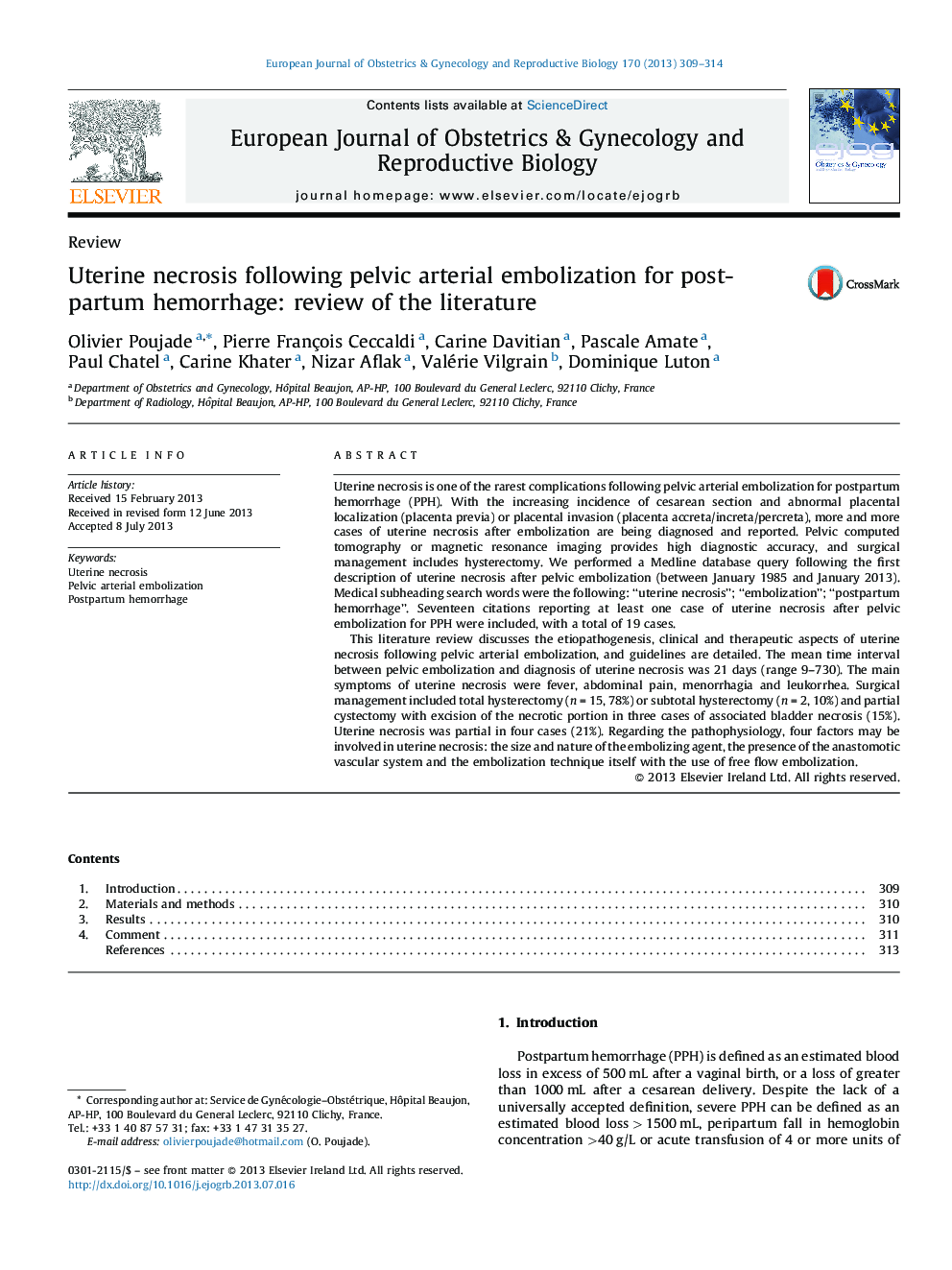| Article ID | Journal | Published Year | Pages | File Type |
|---|---|---|---|---|
| 6174046 | European Journal of Obstetrics & Gynecology and Reproductive Biology | 2013 | 6 Pages |
Abstract
This literature review discusses the etiopathogenesis, clinical and therapeutic aspects of uterine necrosis following pelvic arterial embolization, and guidelines are detailed. The mean time interval between pelvic embolization and diagnosis of uterine necrosis was 21 days (range 9-730). The main symptoms of uterine necrosis were fever, abdominal pain, menorrhagia and leukorrhea. Surgical management included total hysterectomy (n = 15, 78%) or subtotal hysterectomy (n = 2, 10%) and partial cystectomy with excision of the necrotic portion in three cases of associated bladder necrosis (15%). Uterine necrosis was partial in four cases (21%). Regarding the pathophysiology, four factors may be involved in uterine necrosis: the size and nature of the embolizing agent, the presence of the anastomotic vascular system and the embolization technique itself with the use of free flow embolization.
Related Topics
Health Sciences
Medicine and Dentistry
Obstetrics, Gynecology and Women's Health
Authors
Olivier Poujade, Pierre François Ceccaldi, Carine Davitian, Pascale Amate, Paul Chatel, Carine Khater, Nizar Aflak, Valérie Vilgrain, Dominique Luton,
